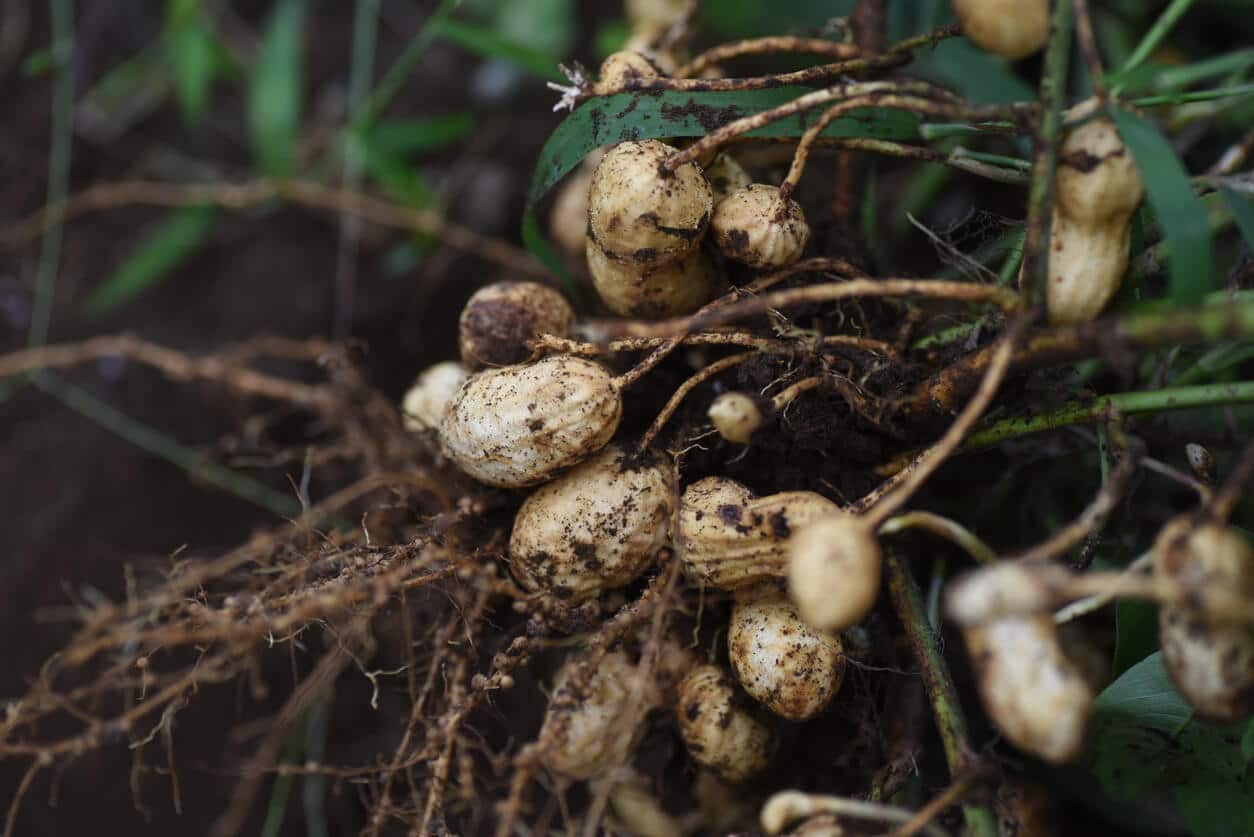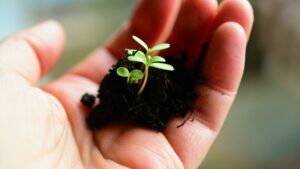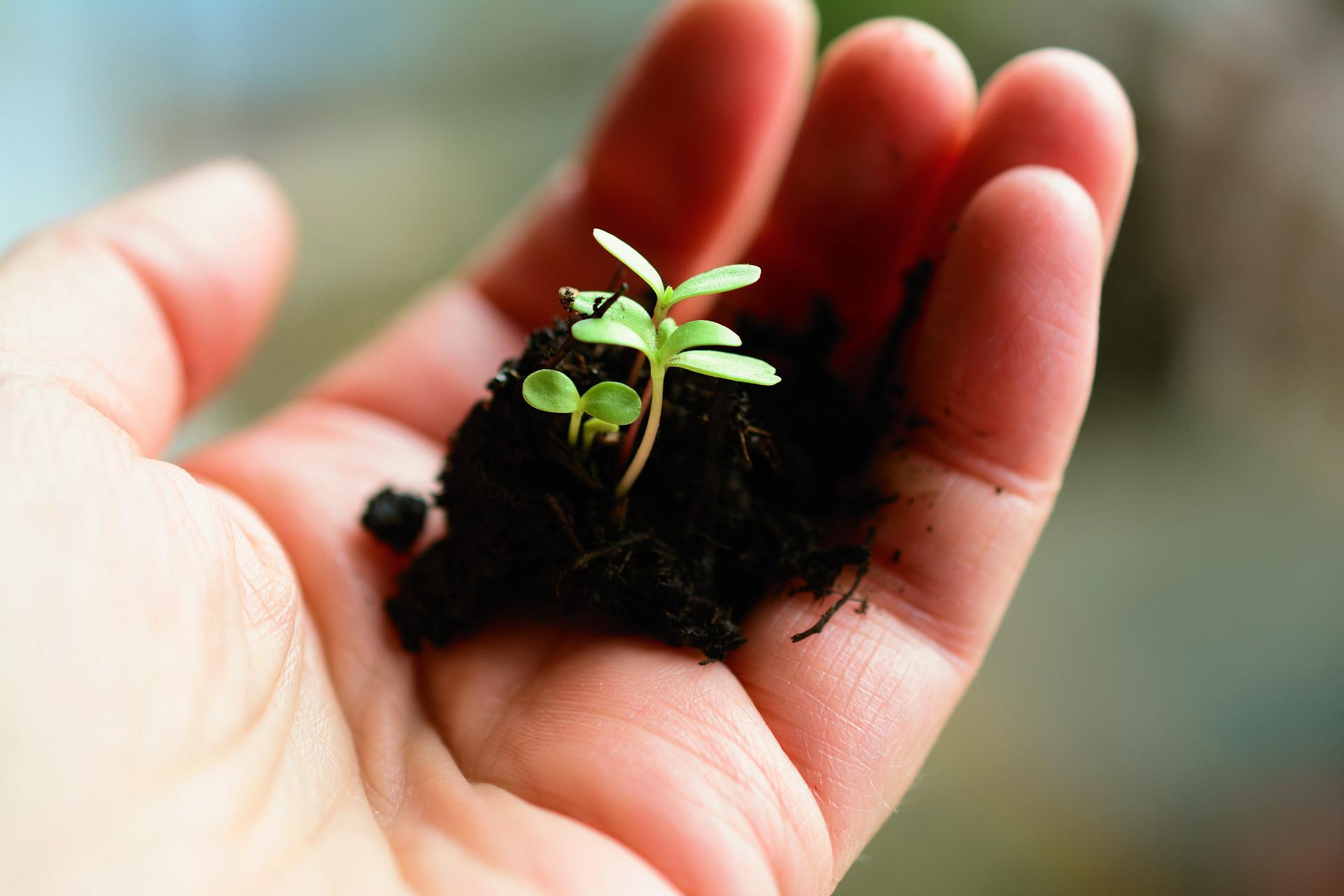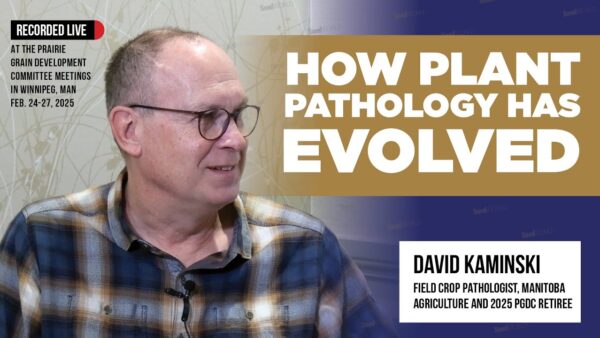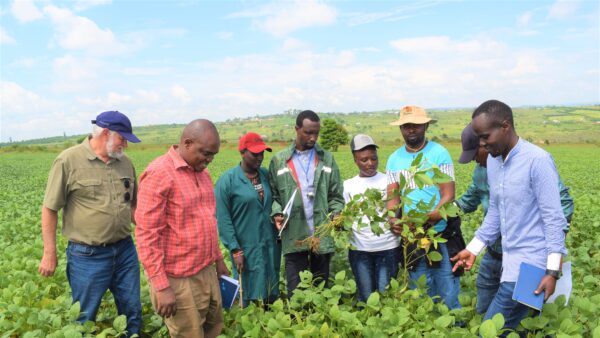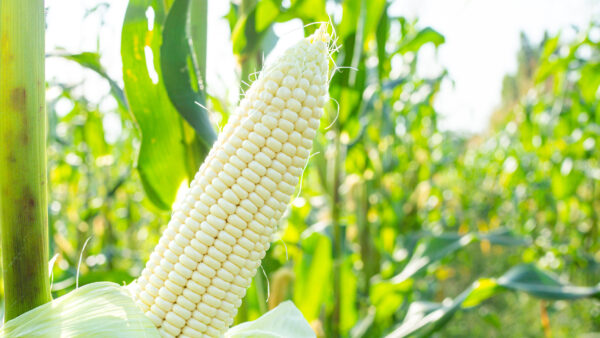Seed breeders hold the keys to combating climate change.
Climate change may seem like a hard case to crack, but seed breeders are working to unlock the solutions our world needs.
Anthony Leddin, Australian plant breeder for Valley Seeds, says climate change is not something that will affect the future of agriculture. It already has.
“A lot of people say climate change takes time, but we’re seeing those changes incredibly fast. In some regions of Australia, we’re in our seventh year of drought. In the 10 years I’ve worked at Valley Seeds, I’ve seen some of our bread and butter breeds fail to survive in this environment,” Leddin says.
Leddin also works with an NGO that works in plant breeding, particularly in developing nations, called Plant Breeders Without Borders. He has seen firsthand the need for improved varieties to combat climate change in the coming years.
“By 2050, we are going to need to increase our food production by 70%, and that has to happen on the back of climate change, which could reduce current production levels by 30%. That equates to a massive goal,” Leddin says.
With 2020 designated as the International Year of Plant Health, one of the goals mapped out by the International Plant Protection Convention from the United Nation’s Sustainable Development Goals, is No. 13: Take urgent action to combat climate change and its impacts.
Seed breeders are the not-so-secret to success component of this goal.
Peggy Ozias-Akins, professor in the College of Agricultural and Environmental Sciences, University of Georgia (UGA), and director of UGA’s Institute of Plant Breeding, Genetics and Genomics, says only around 50% of a plant’s productivity is based on genetics, with a lot of other factors such as management practices and other inputs, but without a strong starting point, farmers are fighting a losing battle.
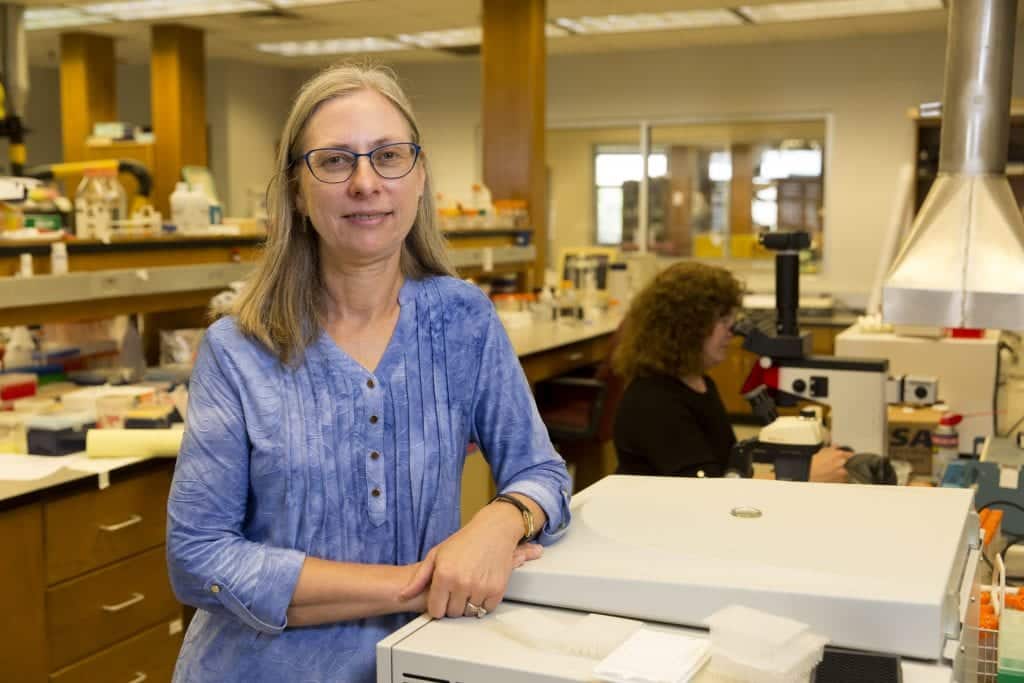
Plant breeders are ultimately breeding for better yields, but climate change resistant cultivars are key to achieving that goal.
“Climate change affects water availability, so we have to consider both drought and flooding. Climate also impacts what pests or diseases attack that crop,” Ozias-Akins says.
Major and Minor Crops
Dave Bubeck, research director, Corteva Agriscience, says plant breeders are central to the industry’s ability to support farmers managing their farms through climate change.
“We have to provide a product to growers that will be resilient and will adapt along the way to anticipated changes,” Bubeck says.
New products are always in development with a continuously full development pipeline and geographic testing around the world annually.
“Our global plant breeding team has to deliver products locally as climate change has different degrees of impact around the world,” Bubeck says.
The majority of that research is focused on major crops, whereas most of Ozias-Akins’s work focuses on peanuts, which is a minor crop.
“If you look at improvements over the past decades, there are tremendous gains in some crops and only minimal developments in others,” Ozias-Akins says, citing maize, soybeans and cotton as crops that have seen significant improvements.
Peanuts are planted on around 1.5 million acres in the United States, compared to more than 90 million acres of maize.
“The value of crop-per-acre might be greater for peanuts, but the majority of the work being done on that crop is still going to be in the academic sector. On the public side, the amount of funding to support breeding efforts for smaller crops is driven by market demand,” Ozias-Akins says.
Sharing for Success
Now, more than ever before, both public and private breeders are coming together.
“The public sector has largely filled this space in the past so they know how it works, and the private sector companies are keen to get in there. We are now seeing the public sector doing the pre-breeding work such as with molecular technologies, and the private sector does the breeding after that,” Leddin says.
Bubeck is also the vice-president of the National Association of Plant Breeders (NAPB), and he has been impressed with the collaboration the group offers.
“It’s a relatively young organization that emerged out of the Plant Breeding Coordinating Committee, which has allowed the private sector to come alongside as we advance excellence in research, education and outreach together,” Bubeck says.
Breeders also support germplasm collections, which speed up developments and improvements.
“The National Plant Germplasm Collection is available for commercial or public sector breeders to utilize,” Bubeck says. “There is a need for improved characterization of that germplasm collection for multiple genetic traits, such as disease resistance, so the genetic material can be utilized more quickly.”
Ozias-Akins says once a genome has been sequenced, it greatly accelerates a breeding program.
“Having that molecular information allows us to associate specific markers for certain traits. We can now screen more material efficiently,” she says.
Changing Directions
While collaboration has increased, it’s still very difficult to divert funding away from major crops.
Leddin suggests that climate change may be the one factor that could lead more seed companies to diversify research, but that will be driven by farmers, and ultimately, by consumers.

“Governments are reactive rather than proactive. Once there are shortages on supermarket shelves and prices go up, the consumer will send clear messages to the governments that they want the research in food production,” Leddin says.
Leddin’s efforts in developing nations is largely focused on minor crops, but he fully understands the importance of both.
“There will always be a place for research on major and minor crops. It’s just about deciding when a species cannot be grown in a certain area and needs to be replaced by one that can,” Leddin says. Economics does this. As a crop is in more demand, research increases. Some outreach organizations try to kickstart the research process in developing countries where minor crops that thrive could be the difference between a farm that thrives and one that dies.
“I tell farmers that the best insurance against climate change is having diversity in species. If one fails, then another might survive,” Leddin says. “Yields of many of the minor crops are low, and through breeding, we can make good gains to improve these to make them economical.”
Increasing Education Efforts
As advances in breeding continue, the need for continued education also increases.
“We’re certainly working on more innovative breeding technologies, but that will depend, in part, on consumer acceptance,” Ozias-Akins says, which comes down to education efforts.
She would like to see the academic community take a more active role in educating consumers about breeding techniques, but understands it’s difficult to juggle all those responsibilities. Partnerships like the NAPB help bridge this gap by communicating with policy makers, potential students, scientists, industry stakeholders, and the general public.
Bubeck appreciates the educational opportunities that NAPB offers for himself as well.
“As private companies, we have to engage with the academic community, and I appreciate being able to work closely with state faculty at the university level, and with the U.S. Department of Agriculture in multiple capacities. It’s imperative we stay connected in the face of these changes,” Bubeck says.
NAPB also has a strong student membership, which could be key to the uphill food security battle, as many are concerned about the decline in plant breeders.
“There are just less plant breeders than there used to be. A lot were employed in the public sector and we’ve seen funding for those programs dwindle. Universities just aren’t teaching this as a subject in the same way as there is a lot more interest in the molecular space now,” Leddin says.
However, even with advanced technology and impressive laboratory work, the industry will still need plant breeders to apply that knowledge in the field.
“We need breeders who have a real understanding of the plant they are working with,” Leddin says.
The Prediction Process
In the past, Bubeck says many companies used single-year data to advance material from one stage in the pipeline to the next, but climate change has caused more sporadic weather patterns.
“We believe we build a buffer for climate trends by utilizing multi-year predictions, and ultimately multi-year selection schemes in local geographies, enabling selection for products that will perform the best in future growing seasons,” Bubeck says.
Seed improvements take time, and using this model allows companies to leverage data to create stable solutions no matter what each specific year brings.

Leddin says location-based prediction tools are also helpful. The Commonwealth Scientific and Industrial Research Organization (CSIRO) and Bureau of Meteorology, Climate Change in Australia website offers a tool that uses weather patterns and location information so farmers can see towns in other areas that currently model the climate their own area will likely experience in 20 or 30 years.
“It draws lines to other towns that have the climate you’ll probably have,” Leddin says. “It allows farmers to start planning earlier.”
For example, Leddin says the wine industry utilizes this tool when planting new varieties because it takes several decades for the vines to produce.
“They can use this map to see what varieties will thrive in their future climate based on what varieties are thriving in similar climates right now,” Leddin says.
Future Focus
Food security in the midst of changing climates will require out-of-the-box thinking, as solving one problem could create another.
For example, a lot of cropping in Australia is now done with minimal tillage, which increases soil carbon and helps combat reduced rainfall. However, it relies more heavily on the application of glyphosate to control weeds, which some see as a different problem. In addition, organic farming solves some consumer and conservation issues, but yields are drastically reduced and the land is not as productive, which increases the greenhouse gasses produced.
“That’s what we do as plant breeders. We look at the whole picture, the global picture,” Leddin says.
It’s important to consider a global disease perspective as well.
“One problem we’re working on right now is that soybeans in Latin America need mechanisms to deal with Asian soybean rust, a foliar blight that causes a lot of problems in that area,” Bubeck says. “It’s not something U.S. soybean farmers are faced with yet, but we have to be ready if that disease evolves and rust spores could begin to overwinter across the Midwest.”
Pest and disease pressures vary widely across the U.S. from the more arid western growing areas to the more humid eastern growing environments.
“Our western climate is more arid and we typically see more disease pressure in the east with higher humidity and more cloud cover, but as those conditions change, we have to consider those additional challenges in new areas,” Bubeck says.
Different flowering times are another important breeding goal as plants have to adapt to new climates.
“There are many traits that seed breeders select from,” Leddin says, and that’s where more complications can emerge.
“They need to rank them in importance for selection and not all traits are positively correlated. For example, they might select for forage yield in grasses, which can then decrease seed yield,” Leddin says.
Still, in the midst of climate change, breeders and seed companies are optimistic about the potential for progress.
“We’re in a better position today than ever before because we can use advanced prediction systems and molecular data at the genomic level to target the traits growers care about,” Bubeck says.
Leddin says the key thing to remember is that this is global initiative, and seed breeders are all working towards the future.
“We have to look at food security in the face of climate change from a global point of view. That’s our responsibility.”



